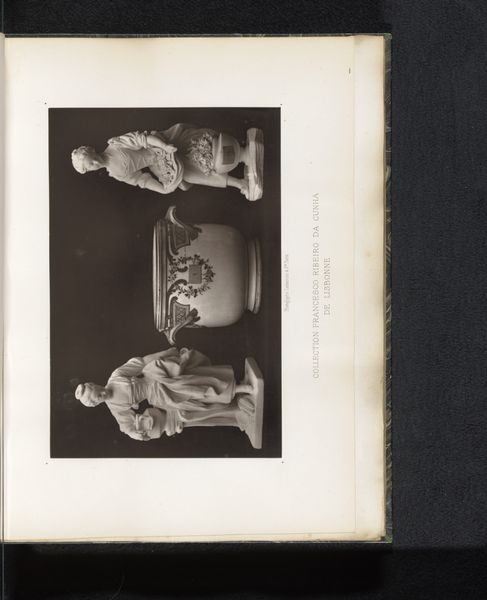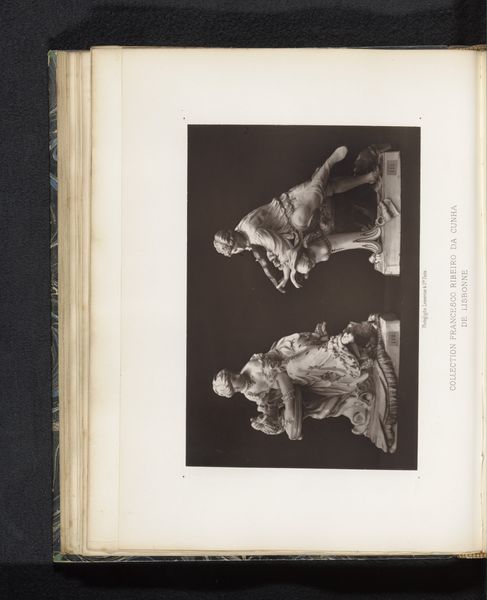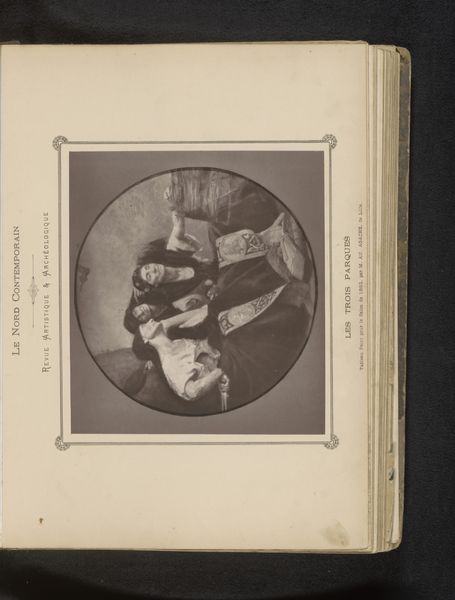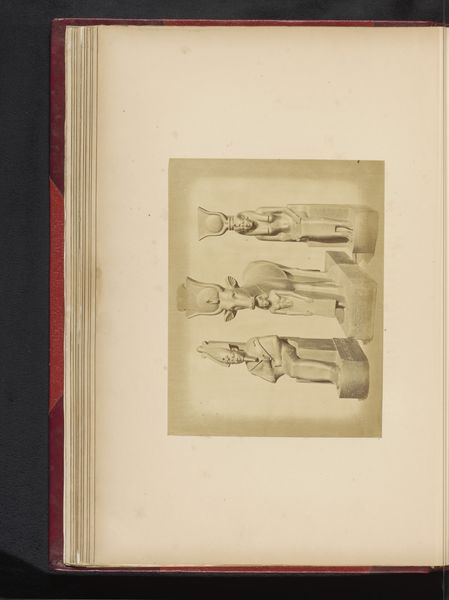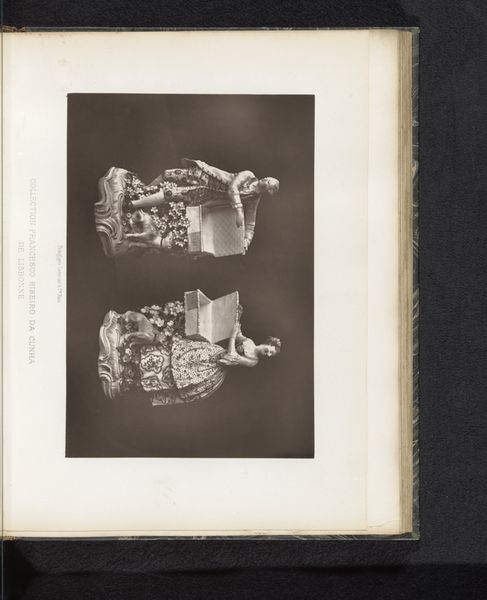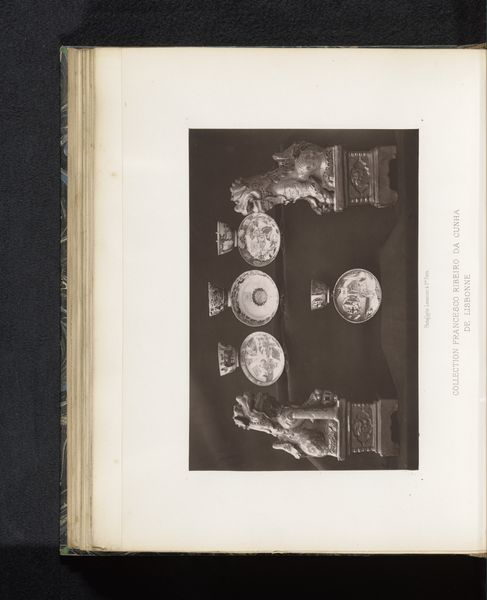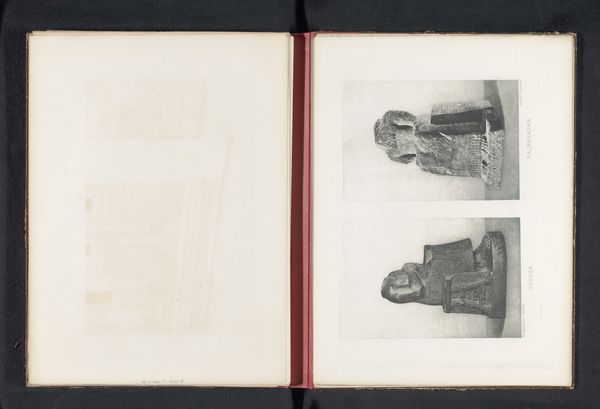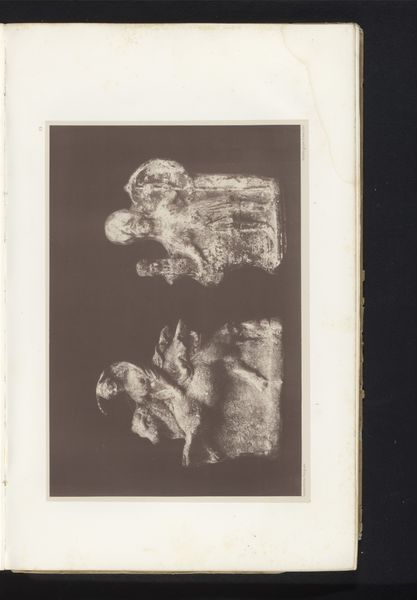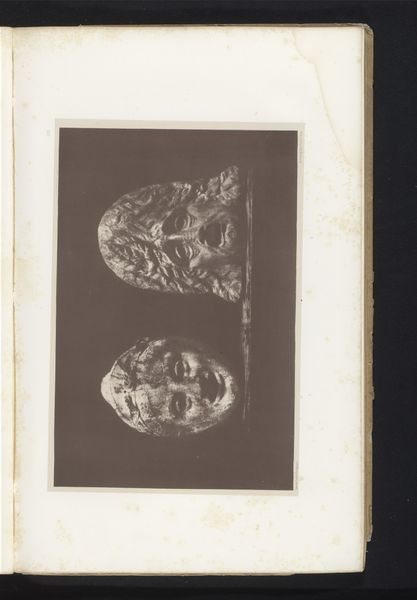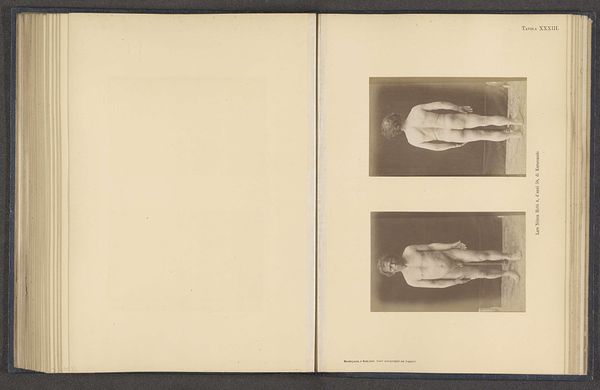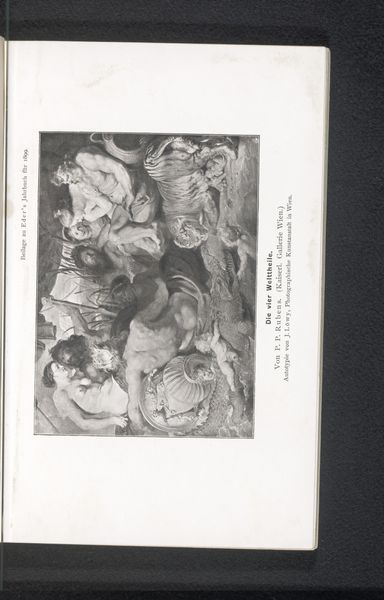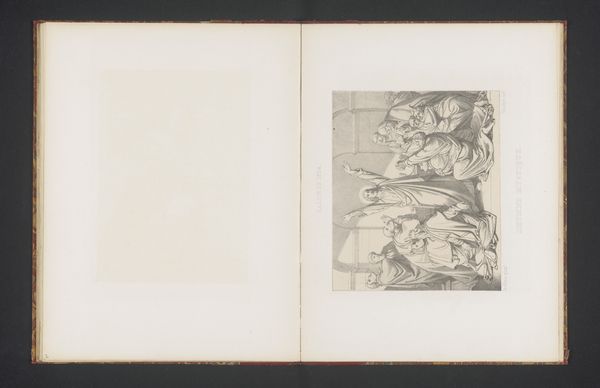
Twee sculpturen van de liefde die de jeugd vangt en kwelt before 1884
0:00
0:00
lemerciercie
Rijksmuseum
print, photography, sculpture
#
portrait
# print
#
greek-and-roman-art
#
classical-realism
#
figuration
#
photography
#
sculpture
#
history-painting
#
statue
Dimensions: height 134 mm, width 188 mm
Copyright: Rijks Museum: Open Domain
Curator: Looking at this print of two sculptures titled "Twee sculpturen van de liefde die de jeugd vangt en kwelt" which translates as "Two Sculptures of Love Catching and Tormenting Youth," presumably photographed sometime before 1884, there’s immediately something quite melancholic isn't there? Editor: Melancholic, yes, and charged. You see this almost theatrical staging – two distinct tableaux, both featuring a maternal figure intertwined with a cherubic child, frozen mid-struggle. It speaks to the historical positioning of women and the power dynamics inherent in those relationships, that constant negotiation of freedom and constraint. Curator: Ah, yes. And each figure is writhing almost, I feel it so vividly—a sensation of touch—of coolness against my fingers—stone capturing flesh so completely that it makes you question the material itself! It’s this push-and-pull. It's really breathtaking how this sculpture, through the photograph, renders the struggle between love and the sometimes brutal reality of growing up. It captures a paradox: tenderness and torment side by side. Editor: Precisely! Consider the title, though: "love catching and tormenting youth." "Tormenting" is a strong word. But isn't that at the core of much romanticized historical art and literature that often overlook the everyday power imbalances? We have on one hand the loving act of providing but, on the other, the subtle chains and control over somebody's potential? Curator: So true. It challenges our modern perspective, doesn't it? Editor: Exactly. And it’s this tension that continues to intrigue—this piece becomes a historical artifact, it documents attitudes and relationships of its period and offers us today the possibility to consider other interpretations and parallels. The sculpture, viewed through the lens of a photograph, gives us so much room for modern reinterpretation and commentary about control. Curator: And isn't that the most sublime aspect of a piece of art? The open ended quality. This photograph then doesn't merely present, but kind of unlocks, new avenues of thinking for the curious and for the young. Editor: An enduring question posed in stone and captured in print. Yes, food for thought.
Comments
No comments
Be the first to comment and join the conversation on the ultimate creative platform.
